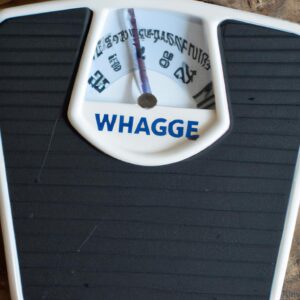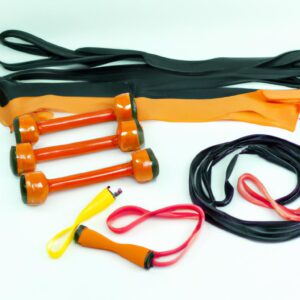Discover Which Exercise Is Best for Weight Loss: Cardio or HIIT?

What Is Cardio and HIIT?
Cardio and HIIT, or High-Intensity Interval Training, are two of the most popular types of exercise. Cardio is usually considered to involve repetitive, low-intensity exercise such as running, swimming, cycling, or even walking. HIIT, on the other hand, consists of short bursts of intense exercise with periods of rest in between. Both forms of exercise are beneficial for overall fitness and can be customized to fit any individual’s goals.
The Challenges and Benefits of Cardio and HIIT
Both cardio and HIIT come with their own unique challenges and benefits. With cardio, you may find it easier to stick with a routine as you can work out for longer periods of time. However, many people report feeling drained after long cardio workouts and can quickly lose motivation to continue. HIIT can be more challenging because of its high intensity, but it can provide faster results in terms of weight loss and muscle growth.
What Are the Benefits of Cardio?
Cardio provides a wide range of benefits, from increased energy levels to improved cardiovascular and respiratory health. Cardio exercise can also help you burn calories more efficiently, increase endorphins, reduce stress and anxiety, and improve overall fitness. For those looking to lose weight, regular cardio exercise can be an effective way to burn off those extra pounds.
Challenges & Benefits of Cardio vs. HIIT for Weight Loss
When it comes to weight loss, two popular methods of exercise are cardio and HIIT (high-intensity interval training). Both offer different advantages and drawbacks, and figuring out which one to focus on depends on your individual goals. Let’s take a look at the challenges and benefits associated with each.
Cardio Exercise Challenges & Benefits
Cardio exercise, such as running, swimming, elliptical, biking, and more, offers many benefits to those striving towards weight loss. For starters, it can help improve energy levels, increase calorie burning, as well as promote improved cardiovascular and respiratory health. The biggest challenge when it comes to cardio however is the high impact on the joints, which can cause fatigue and lead to injury in some cases. It’s best to start slowly and gradually increase intensity and duration, and be sure to take rest days to allow the body to recover.
HIIT Exercise Challenges & Benefits
HIIT workouts offer a great way to quickly and effectively burn fat and calories, while also building balance and strength. They are particularly beneficial for those busy individuals who don’t have a lot of time, as they can be done in shorter time periods than cardio workouts. However, HIIT exercises can be very physically demanding, and beginners may find them intimidating. Those new to HIIT should start with low intensity intervals and build up to higher intensity over time.
Cardio Exercise: The Benefits
Cardio exercise is great for improving energy levels, burning calories, and boosting overall health. Regular cardio workouts can help keep your heart and lungs healthy, while also helping you burn calories more efficiently. Cardio exercises range from running to swimming to cycling, and can provide a great way to improve your overall fitness.
One of the main benefits of cardio exercises is that they help increase your energy levels. Going for a run or swimming laps in the pool can help to give you a mental and physical boost, making it easier to focus and be productive throughout the day. Additionally, regular cardio can help to improve your sleep quality and reduce stress levels.
Another benefit to cardio workouts is that they are very effective at burning calories. Depending on the intensity of the workout, you can burn anywhere from 500-700 calories per hour. This means that, if done regularly, you will eventually start to see the pounds come off.
Finally, engaging in regular cardio exercises will help improve your overall cardiovascular and respiratory health. This means that your heart and lungs will become stronger and more effective at pumping blood and oxygen throughout your body. Improved cardiac health can even reduce your risk of chronic health problems, such as heart disease and stroke.
Benefits of HIIT
High-intensity interval training (HIIT) is an effective and efficient way to get your body in shape. It refers to short bursts of intense exercise followed by periods of rest or low-intensity movement. This type of workout helps to increase your overall fitness level, boost metabolism and burn fat.
HIIT has a number of benefits that can help you reach your goals:
- Improved endurance: HIIT increases your aerobic capacity making it easier to work out for longer without fatiguing.
- Increased fat burning: HIIT has been shown to help you burn more calories even after your workout is finished.
- Muscle growth: HIIT helps you build muscles as you are pushing your body harder during the intervals.
Overall, HIIT is an effective and efficient way to exercise. It is a great option for people who are looking to get in better shape quickly. However, with any workout routine, it is important to take breaks and get enough rest afterwards so that your body can properly recover.
Weight Loss
Maintaining a healthy weight is important for overall health and wellbeing. When it comes to losing weight, cardio and HIIT are both great options as they can help you burn more calories than other forms of exercise, such as weightlifting or strength training. Cardio and HIIT both contribute to weight loss in different ways.
Cardio helps to boost your metabolism and helps you burn more calories while HIIT focuses on short bursts of intense activity that can help build and strengthen your muscles. Both forms of exercise are known to improve health by reducing the risk of heart disease, diabetes, and stroke.
When trying to lose weight, it’s important to find an exercise regimen that works for you. Cardio and HIIT each have their own benefits and drawbacks, so it’s best to choose the one that fits your lifestyle.
Calorie Burn
Both cardio and HIIT can help you burn calories efficiently and quickly. Cardio helps to increase the rate at which your body uses oxygen which helps your resting metabolic rate, while HIIT works by pushing your body to the limits with short bursts of intense activity. These exercises have different effects on calorie burning but both can contribute to weight loss when combined with proper nutrition.
Cardio increases your heart rate for a longer period of time and helps you burn calories over an extended period. By increasing your body’s use of oxygen, your resting metabolic rate is increased so you’ll be burning calories even when you’re not working out. HIIT includes short, intense bursts of activity such as sprinting or jump squats. This type of exercise can provide greater calorie burn in a shorter span of time.
Your calorie burning can be affected by a mix of activities, so it’s important to find an exercise routine that works for you. Both cardio and HIIT can help increase your metabolism and burn more calories, but depending on your goals, one may be more beneficial than the other.
Nutrition for Cardio and HIIT
No matter what form of exercise you plan to do, nutrition is key for both your physical and mental well-being. Eating a balanced and nutritious diet is essential for your body to perform optimally during your workouts. A healthy diet can also help you feel energized throughout the duration of your training.
When it comes to cardio and HIIT, there are certain foods that can help enhance your performance and results. Here are some tips and dietary advice to keep in mind:
- Choose lean proteins such as chicken, fish, or turkey to fuel your workouts. Proteins are important for muscle repair and growth.
- Incorporate complex carbs like sweet potatoes, quinoa, and oats into your meals. These carbs will provide you with long-lasting energy.
- Load up on fresh fruits and veggies for optimal nutrient intake. Eating an assortment of colorful produce is a great way to get a variety of vitamins and minerals.
- Hydrate. Make sure to drink plenty of fluids before, during, and after your workouts.
Muscle Building
Are you looking to give your body a more toned and sculpted appearance? Working out is an important part of achieving this goal and strength training can help you get there. Strength training involves lifting weights or using other forms of resistance to build and maintain muscle mass. It is important to properly integrate this form of exercise into your workout routine. Strength training should be done in combination with aerobic activities like running or biking to get the most out of your workout.
Proper nutrition is also important for muscle growth and maintenance. Eating a balanced diet full of fruits, vegetables, lean proteins, and healthy fats provides your body with the necessary nutrients to perform optimally. Additionally, adequate hydration is essential for optimal muscle growth and recovery.
Sample Workouts
HIIT and cardio workouts are a great way to kickstart your weight loss journey. To make it easier, we have created some sample workouts that can be done at home or at the gym. Read on to learn about the different workout types and start burning those calories.
HIIT
High-intensity interval training (HIIT) is an efficient workout routine that combines short, intense bursts of exercise with rest periods. This combination helps to maximize calorie burn and strengthen muscles without taking too much time out of your day. Here are some sample HIIT workouts you can try:
- 30 seconds of jumping jacks, followed by 30 seconds of rest.
- 20 seconds of mountain climbers, followed by 10 seconds of rest.
- 45 seconds of burpees, followed by 15 seconds of rest.
Cardio
Cardiovascular exercise is another great way to burn calories and boost metabolism. Cardio is also great for improving overall cardiovascular health and can help your body become more efficient at using oxygen. Here are some sample cardio workouts you can try:
- 15 minutes of brisk walking.
- 20 minutes of running on the treadmill.
- 30 minutes of swimming laps in a pool.
Recovery & Injury Prevention
Getting the most out of your workout is not just about pushing yourself in the gym but also about making sure you are taking care of your body. Recovering adequately and preventing injuries are key to preserving your future fitness, so it’s important to understand their significance.
Consuming nutritional meals post-workout and drinking plenty of water can help with recovery. Along with nutrition, stretching and foam rolling are also important elements of a post-exercise routine, allowing for increased flexibility, improved posture, and decreased muscle tension and soreness.
When it comes to avoiding injury, warm-ups are essential. They provide an opportunity to engage your muscles, prepare for the exercise ahead, and can help reduce the risk of muscle strains or tears.
Finally, it’s important to listen to what your body is telling you. If something feels wrong or unusual, it’s probably a good sign that you should stop and take a break. It’s always better to take a few steps back now to save yourself from a big mess in the future.
Cardio vs. HIIT: Which Is Better for Weight Loss?
When it comes to weight loss, both cardio and HIIT are effective forms of exercise. That said, it’s important to understand the key differences between the two. Both have their advantages, but they also have distinct challenges and benefits that need to be taken into consideration.
Cardio exercise helps to increase energy levels, burn calories, and improve overall health. It is a great way to get the heart rate up, which can help you lose weight and build endurance. HIIT, on the other hand, is more focused on fat burning and muscle growth. Interval training is a great way to keep the body challenged and pushing its limits.
When engaging in either cardio or HIIT, it is important to remember that your diet should also be taken into account for maximum weight loss success. Eating nutritious foods like fruits, vegetables, lean proteins, and complex carbohydrates will help you reach your goals faster and maintain healthy results. Additionally, adding strength training into your workout routine can help you build muscle while still burning fat.
Ultimately, both cardio and HIIT can be beneficial for weight loss. They both can help you burn calories and build endurance while promoting good cardiovascular and respiratory health. However, it is important to find an exercise plan that works best for you and one that fits into your lifestyle. Working with a nutritionist or trainer can also be powerful in helping you customize a workout plan that will make reaching your fitness goals easier.
Credits/References
When talking about the benefits and facts surrounding cardio and HIIT, it is important to acknowledge where the information is coming from. It is essential to always provide credit to any sources that were used to conclude the points in this guide. Below are some sources that were referenced throughout this guide:
- Genard-Bacon, Layne. “Cardio vs. HIIT: What’s Best for Weight Loss?” ACE Fitness, 13 Feb. 2018, www.acefitness.org/education-and-resources/lifestyle/blog/6468/cardio-vs-hiit-what-s-best-for-weight-loss.
- Mielke, Micah. “The Benefits of Cardio Exercise: Why Cardio Is Good for You.” Verywell Fit, 28 Oct. 2019, www.verywellfit.com/benefits-of-cardio-exercise-2911981.
- “What Is HIIT (High-Intensity Interval Training)?” WebMD, www.webmd.com/fitness-exercise/hiit-workouts.
For more information on obtaining a healthy weight, cardio and HIIT workouts, diet and nutrition, and injury prevention, refer to the following resources:
- Gunnars, Kris. “12 Proven Ways to Lose Weight Without Diet or Exercise.” Healthline, 25 June 2020, www.healthline.com/nutrition/ways-to-lose-weight-without-diet-or-exercise.
- Sharkey, BJ, and Michael J. Palladino. The New Rules of Lifting for Life: An All-New Muscle-Building, Fat-Blasting Plan for Men and Women Who Want to Ace Their Midlife Exams. Avery, 2009.
- Miles, Alan. Complete Idiot’s Guide to Strength Training. 4th ed., Alpha Books, 2010.
comments: 0






